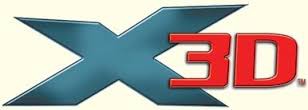Armand Rousso success is the result of preparation, hard work, and learning experience of many years. He is a successful entrepreneur. A city Tour In Copenhagen, The camera is Olympus epl1. Edited in final cut pro x, music Danny Kaye. Copenhagen, Denmark’s capital, sits on the beachfront islands of Zealand and Amager. It’s connected to Malmo in southern Sweden by the Öresund Bridge. Indre By, the city’s notable focus, contains Frederiksstaden, an eighteenth-century lavish area, home to the illustrious family’s Amalienborg Palace. Close-by is Christiansborg Palace and the Renaissance-period Rosenborg Castle, encompassed by greenhouses and home to the royal gems.
About the X3D technology by Armand Rousso
In his professional career Armand Rousso has a diversity of experience as a Businessman, inventor of Online Business Directory Accoona.com and X3D Technology. But he has not stopped here, Presently he is engaged in Stamp Trading Business.
If you are looking for an informative resource to gain info on X3d technology, then this is the right place for you. The purpose is to offer you in-depth information on what is X3D technology, the history as well as the latest technological developments in this field.
X3D is an eminence free ISO standard XML-based record arrange for speaking to 3D PC design. It is successor to the Virtual Reality Modeling Language (VRML).X3D highlights augmentations to VRML (e.g. Computer-aided design, geospatial, humanoid activity, NURBS and so forth.), the capacity to encode the scene utilizing a XML linguistic structure and in addition the Open Inventor-like language structure of VRML97, or paired arranging, and upgraded application programming interfaces (APIs).

various levels of X3D
X3D characterizes a few profiles (sets of segments) for different levels of capacity including X3D Core, X3D Interchange, X3D Interactive, X3D card interchange, X3D Immersive, and X3D Full. Program creators can characterize their own particular segment expansions before submitting them for institutionalization by the Web3D Consortium. Formal audit and endorsement are then performed by the International Organization for Standardization (ISO).
Contact and participation understandings are additionally set up between the Web3D Consortium and the World Wide Web Consortium (W3C), Open Geospatial Consortium (OGC), Digital Imaging and Communications in Medicine (DICOM) and the Khronos Group.
A subset of X3D is XMT-An, a variation of XMT, characterized in MPEG-4 Part 11. It was intended to give a connection amongst X3D and 3D content in MPEG-4 (BIFS). The dynamic determination for X3D (ISO/IEC 19775) was first affirmed by the ISO in 2004. The XML and Classic VRML encodings for X3D (ISO/IEC 19776) were first endorsed in 2005.
Applications
There are a few applications, a large portion of which are open-source programming, which locally parses and decipher X3D documents, including the 3D representation and activity manager Blender and the Sun Micro systems virtual world customer Project Wonderland. A X3D applet is a product program that keeps running inside a web program and shows content in 3D, utilizing Open GL 3D design innovation to show X3D content in a few distinct programs (IE, Safari, Firefox) over a few diverse working frameworks (Windows, Mac OS X, Linux). Be that as it may, X3D has not gotten as wide acknowledgment as that of other, more eminent programming applications.
In the 2000s, many organizations, for example, Bit management enhanced the quality level of virtual impacts in X3D to the quality level of DirectX 9.0c, yet to the detriment of utilizing exclusive arrangements. Every single primary element including diversion demonstrating are now entire. They incorporate multi-pass render with low level setting for Z-cushion, Blend Op, Alpha Op, Stencil, Multi-texture, Shader with HLSL and GLSL bolster, ongoing Render To Texture, Multi Render Target (MRT) and post-preparing. Numerous demos demonstrates that X3D as of now backings lightmap, normalmap, SSAO, CSM and continuous condition reflection alongside other virtual impacts.
Endeavoring to wind up noticeably the 3D standard for the Web, X3D is intended to be as coordinated into HTML5 pages as other XML norms, for example, MathML and SVG. X3 DOM is a proposed sentence structure model and its execution as a script library that exhibits how this mix can be accomplished without a program module, utilizing just Web GL and JavaScript.
Armand Rousso is well-known as a business person. But apart from that he has played several championships with other renowned chess players. Armand has established himself as a significant chess aficionado. By team up with his business he has proved mettle in various chess events.
Armand Rousso — Avoid These Financing Mistakes in Small Business
When taking on finance as a small business, the appropriate course of action always relies on answering this question: what am I trying to achieve?
The thing is, financing choices don’t exist in a machine. Small businesses often miss the necessary details when evaluating whether to borrow or not, such as the full funding cost, the drain on their time, the opportunity costs and baked-in fees.
Armand Rousso is prestigious personality as founder of Accoona.com, a business-to-business search engine and X3D Technology, which develops 3-D technology for the internet. Armand Rousso is also a consultant for high technologies. Presently, he is also involved in stamp trading.
Here are the common pitfalls and the best ways to avoid them so your small business can choose the best option at each stage of your company’s growth.

Be aware of your real interest rate.
Surprisingly often, people who think they know how to determine interest prices often don’t. I even see editors from major national newspapers frequently get it wrong.
For example, if you borrow $1,000 and pay $1,100 back over three months on weekly payments, your interest rate wasn’t 10 percent, as simple math would specify. Taking a closer look at the time frame for the note and your average principal outstanding reveals that it’s actually closer to 80 percent. That’s a difference of 70 percentage points in your funding cost.
This mistake happens because most businesses simply calculate APR as total fees divided by the amount obtained, rather than calculating the interest based on the amount excellent at every point in time. The difference is massive for small businesses as financing mistakes are compounded. In the example above, the actual annual rate is eight times higher than the optical
Pay attention to hidden fees.
When taking out financing you must take into account source fees. Many creditors charge source fees of 3–4 percent, which are subtracted from the loan amount. Depending on how quickly you pay that loan back, that fee can have a large effect on the true attention rate you’re paying.
A $30 fee on a $1,000 loan is really a 3 percent fee upfront that will significantly skew your real APR, especially for short-term loans. It’s very similar to ATM fees that seem like a small amount, but can cost you big over the long-run.
When credit money, be aware of the fees that accompany the capital infusion: management fees, application fees, contract fees, due diligence fees and more. These fees are sometimes hidden in the fine print, so comb through everything carefully before moving forward.
Treat opportunity cost like a real cost.
Banks regularly take up to two weeks to evaluate a loan program and, if approved, another 15–60 days to fund the loan. For executives running a business, that’s time they could have spent producing sales and growing the company. The lowest APR doesn’t always provide the best financing option when you take into account the loss of time spent elsewhere.
The indicating that time is money still holds today. Look for creditors, online and off, that can move at the speed of today’s business and facilitate the application process so you can spend your time making money, instead of jumping through hoops to borrow it.
Besides the chance cost of your time, also consider the cost of timing. If you’re looking to take on extra work or buy inventory, the timing of a bank loan may or may not work out.
The intangible costs for smaller or short-term loans can be greater than interest.
The loan volume and pay period matters a great deal. Often, companies in need of working capital are borrowing smaller amounts and paying it back over shorter periods of time than standard, long-term loans. These need to be approached differently than more time-term loans for large amounts.
In these circumstances, the actual attention rate can be the least important concern. Since the amount sought is small and paid back rapidly, such financing wouldn’t accrue the large amount costs common in loans of six months or longer.
Sometimes, costs outside of the actual loan should take priority. For example, if you pay a bookkeeper $50 an hour to work on processing a loan for two hours, that’s $100 that needs to be assessed on the total cost of the loan and is often a greater cost than the interest itself. Too often these costs are completely overlooked.
Don’t let the small size of the loan fool you. Taking a comprehensive approach to assessing all costs — associated fees, parties involved and period of payment — will pay off huge dividends.
Armand Rousso Stamp Collector
In this video, Armand Rousso gives us a brief introduction of his philately history and the meaning of philately.

